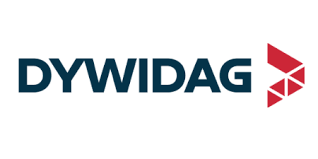Cross Border Ecommerce Platforms
Published Date: 15 December 2025 | Report Code: cross-border-ecommerce-platforms
Cross Border Ecommerce Platforms Market Size, Share, Industry Trends and Forecast to 2033
This comprehensive report provides in‐depth insights into the Cross Border Ecommerce Platforms market, covering key market dynamics and trends from 2024 to 2033. It offers analyses on market size, growth rates, industry structure, segmentation, regional performance, technology advancements, and future forecasts. The report enables stakeholders to make informed decisions in a rapidly evolving global landscape.
| Metric | Value |
|---|---|
| Study Period | 2024 - 2033 |
| 2024 Market Size | $2.70 Billion |
| CAGR (2024-2033) | 10.2% |
| 2033 Market Size | $6.69 Billion |
| Top Companies | Shopify, Amazon Global Selling, Alibaba Group |
| Last Modified Date | 15 December 2025 |
Cross Border Ecommerce Platforms (2024 - 2033)
Cross Border Ecommerce Platforms Market Overview
Customize Cross Border Ecommerce Platforms market research report
- ✔ Get in-depth analysis of Cross Border Ecommerce Platforms market size, growth, and forecasts.
- ✔ Understand Cross Border Ecommerce Platforms's regional dynamics and industry-specific trends.
- ✔ Identify potential applications, end-user demand, and growth segments in Cross Border Ecommerce Platforms
What is the Market Size & CAGR of Cross Border Ecommerce Platforms market in 2024?
Cross Border Ecommerce Platforms Industry Analysis
Cross Border Ecommerce Platforms Market Segmentation and Scope
Tell us your focus area and get a customized research report.
Cross Border Ecommerce Platforms Market Analysis Report by Region
Europe Cross Border Ecommerce Platforms:
Europe's market demonstrates consistent growth, with an increase from 0.80 in 2024 to an expected 1.98 by 2033. The region has a well-established digital economy, supported by stringent data protection laws and a high standard of consumer confidence in digital transactions. Continued investments in technology and cross-border logistics further stimulate market expansion.Asia Pacific Cross Border Ecommerce Platforms:
In Asia Pacific, the market is experiencing steady growth driven by a rapidly expanding internet user base and increased smartphone penetration. The region recorded a market size of 0.55 in 2024, expected to rise to 1.36 by 2033. Economies like China, India, and Southeast Asian countries are investing in digital infrastructure and cross-border trade facilitation, making this region a key driver in the global market dynamics.North America Cross Border Ecommerce Platforms:
North America remains one of the most mature and dynamic regions in the cross-border ecommerce ecosystem. With a 2024 market size of 0.93 anticipated to grow significantly to 2.30 by 2033, the region benefits from advanced technological infrastructures, high consumer purchasing power, and a robust regulatory framework that encourages digital trade.South America Cross Border Ecommerce Platforms:
South America, while relatively nascent in its adoption of cross-border ecommerce, shows promising growth potential. With a market value of 0.11 in 2024 escalating to an estimated 0.26 by 2033, improvements in regional logistics and increased digital literacy contribute to enhanced customer engagement and smoother international transactions.Middle East & Africa Cross Border Ecommerce Platforms:
The Middle East and Africa region, though currently smaller with a 2024 market size of 0.32, is projected to grow to 0.79 by 2033. This growth is facilitated by an increasing focus on digital transformation initiatives, improvements in logistics infrastructure, and a burgeoning young consumer demographic eager to engage in online commerce.Tell us your focus area and get a customized research report.
Cross Border Ecommerce Platforms Market Analysis By Platform Type
Global Cross-Border E-commerce Platforms, By Platform Type Market Analysis (2024 - 2033)
The platform type segment is broadly categorized into marketplaces, direct retail, and social commerce. Marketplaces, offering an estimated market size of 1.70 in 2024 and projected to reach 4.20 by 2033 with a constant share of 62.81%, dominate the industry. Direct retail and social commerce, with respective market sizes of 0.69 and 0.32 in 2024, and expected to grow to 1.70 and 0.79 by 2033, complement the ecosystem by providing specialized, customer-centric services. This segmentation reflects consumer preferences, brand loyalty, and access to diverse digital storefronts, while enabling competitive pricing strategies and tailored shopping experiences.
Cross Border Ecommerce Platforms Market Analysis By Payment Method
Global Cross-Border E-commerce Platforms, By Payment Method Market Analysis (2024 - 2033)
Payment methods play a critical role in the success of cross-border ecommerce. The market is segmented into credit/debit cards, E-wallets, bank transfers, and cryptocurrencies. Credit/debit cards dominate with a market size of 1.42 in 2024, growing to 3.52 by 2033 and maintaining a share of 52.61%. E-wallets, bank transfers, and cryptocurrencies, having market sizes of 0.63, 0.35, and 0.30 respectively in 2024, ensure that there is flexibility and security for consumers. These segments highlight the importance of secure and efficient payment systems that drive consumer trust and facilitate international transactions.
Cross Border Ecommerce Platforms Market Analysis By Logistics Solution
Global Cross-Border E-commerce Platforms, By Logistics Solution Market Analysis (2024 - 2033)
Logistics solutions, encompassing shipping aggregators, fulfillment centers, and cross-border distribution services, are indispensable in optimizing the delivery process. Shipping aggregators, with an estimated market size of 1.70 in 2024 expected to grow to 4.20 by 2033, spearhead efficient order routing and cost management. Fulfillment centers and cross-border distribution services further support the supply chain by ensuring timely processing and dispatch of orders. These components reflect the critical role of logistics in providing a seamless consumer experience and establishing strong, responsive supply chain networks across international markets.
Cross Border Ecommerce Platforms Market Analysis By Target Market
Global Cross-Border E-commerce Platforms, By Target Market Market Analysis (2024 - 2033)
Target market segmentation is primarily divided into B2B, B2C, and C2C models. B2B channels, recording a market size of 1.70 in 2024 and forecasted to reach 4.20 by 2033 with a stable share of 62.81%, facilitate wholesale and bulk trade across borders. In contrast, B2C and C2C segments, both starting at a market size of 0.69 and 0.32 respectively in 2024 and projected to mirror similar growth patterns with shares of 25.41% and 11.78%, emphasize personalized shopping and peer-to-peer transactions. This segmentation underscores diverse purchasing behaviors and the importance of tailored strategies to capture distinct consumer bases.
Cross Border Ecommerce Platforms Market Analysis By Value Add Services
Global Cross-Border E-commerce Platforms, By Value-Add Services Market Analysis (2024 - 2033)
Value-add services including customer support, analytics and optimization, and multi-language support augment the core ecommerce platforms. Customer support services, with a robust market size of 1.70 in 2024 growing to 4.20 by 2033, ensure that customer inquiries and issues are resolved efficiently, fostering loyalty. Analytics and optimization, and multi-language support—starting at market sizes of 0.69 and 0.32 respectively—are critical for tailoring the shopping experience and maximizing conversion rates. These services serve to enhance the overall customer journey, address localization challenges, and empower platforms to refine operational efficiencies in an increasingly competitive market.
Cross Border Ecommerce Platforms Market Trends and Future Forecast
Tell us your focus area and get a customized research report.
Global Market Leaders and Top Companies in Cross Border Ecommerce Platforms Industry
Shopify:
A leader in ecommerce solutions, Shopify provides comprehensive platform services that empower businesses to scale internationally with robust cross-border features and flexible payment integrations.Amazon Global Selling:
Amazon has established a formidable presence with its Global Selling platform, offering integrated logistics, advanced technology, and a broad network connecting sellers and buyers across continents.Alibaba Group:
With a strong foothold in global trade, Alibaba facilitates efficient cross-border transactions through its diverse marketplaces and innovative payment solutions, continuously adapting to market demands.We're grateful to work with incredible clients.









